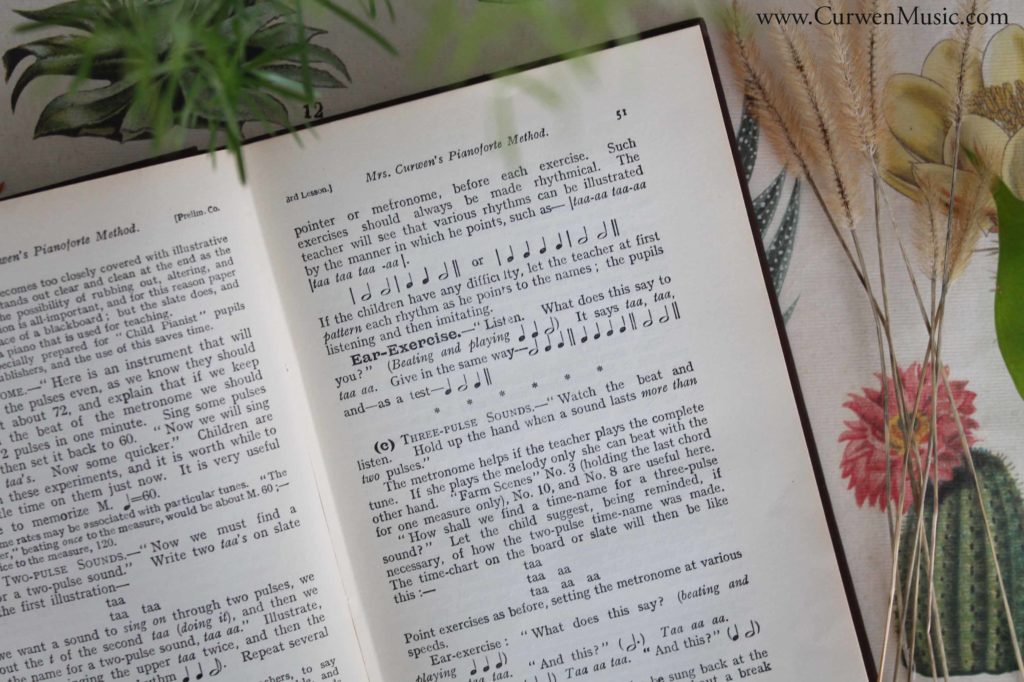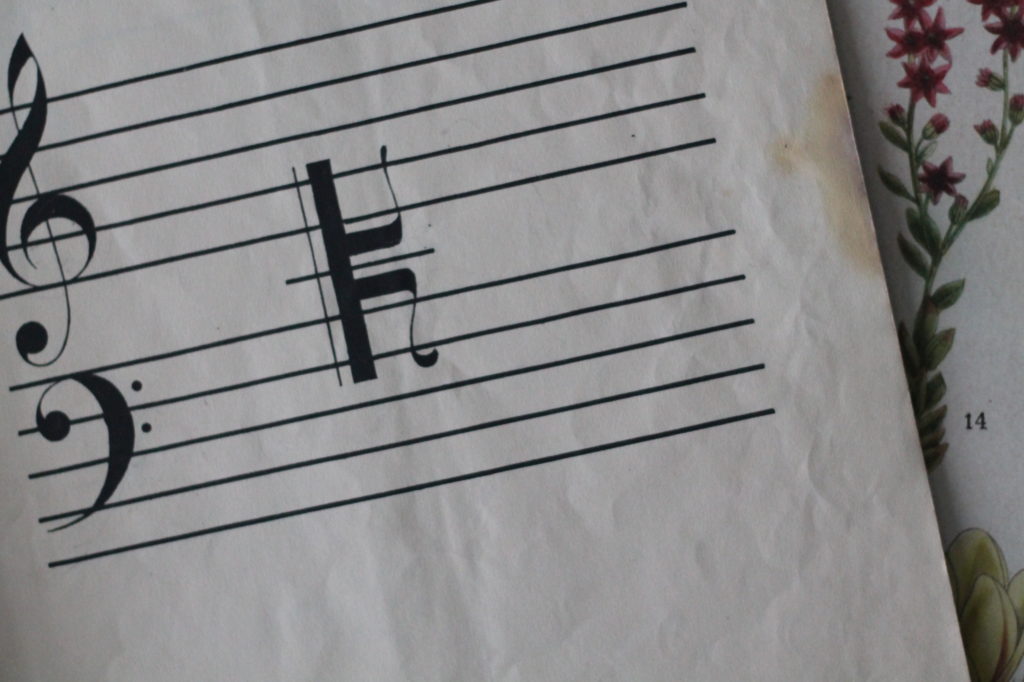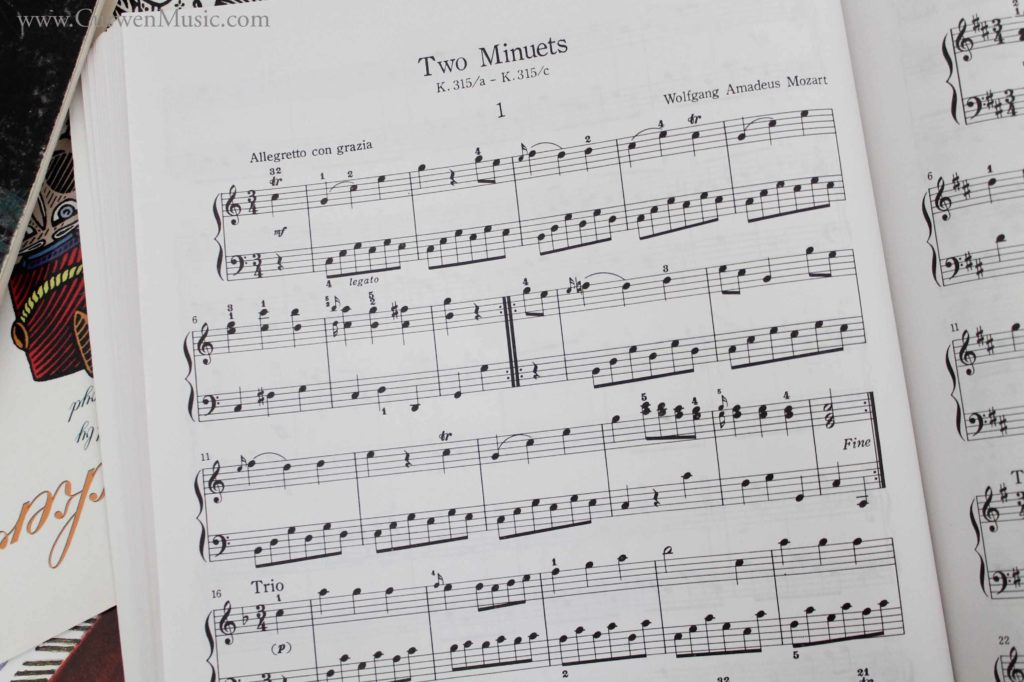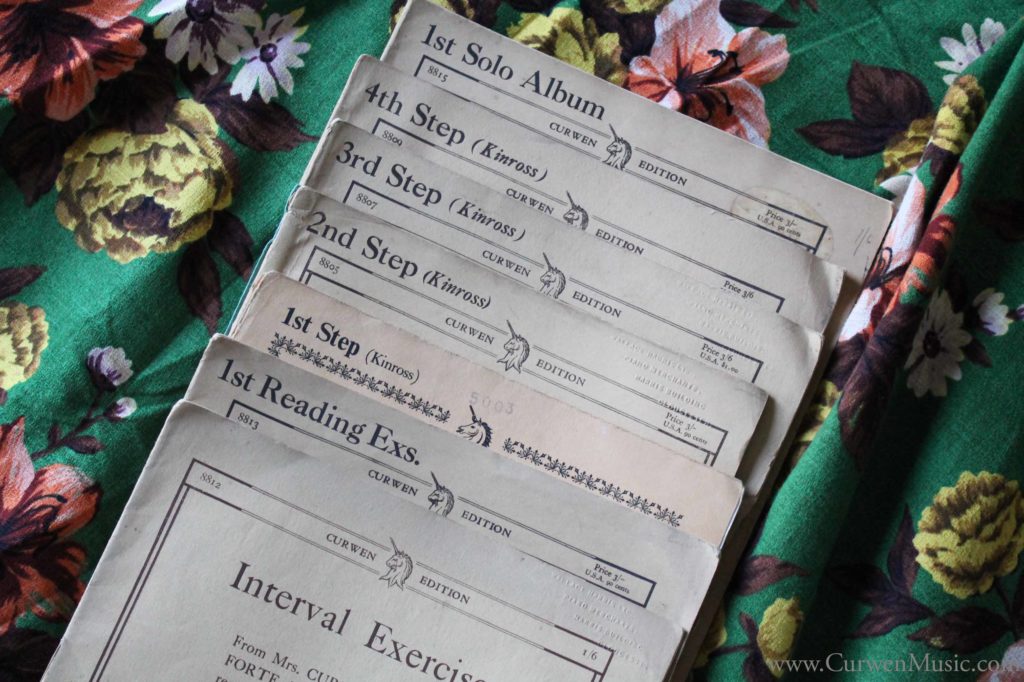In the below video, you’ll see the over arching principles Mrs. Curwen uses to teach the staff. It encompasses facets from all five preliminary lessons. This is not something that would be taught in a single lesson. One of the defining traits of her method to teach the staff is her use of the continuous intervals of the thirds.
Mrs. Curwen believed firmly that you “teach the thing before the sign.” In this video, let’s discuss how she applies this idea to the teaching of pulse, measure, and finally the quarter note.
When it comes to studying Mrs. Curwen’s Method, I’ve spent the most time studying her beginner Preliminary Lessons. Most of my students are beginner students. Mrs. Curwen also mentions rather…
Remember, Mrs. Curwen always draws upon the known to teach the unknown. What does the child know?
The child knows the Sol-fa scale. The child usually can hear and sing doh, ray, me, fah, soh, lah, te, doh. They know what that should sound like. Let them choose a starting sound on the piano (a middle pitch that works for their range) and sing the scale.
Unbarred sentences are simply lines of music without bar lines. The child has the responsibility to fill in the bar lines. If a child has any misunderstanding of time notation, this is yet another exercise put in place to bring that misunderstanding to light.
This is another thorough way that Mrs. Curwen tests the knowledge of time notation.
If you’ve done any searching around online for some original versions of Mrs. Curwen’s piano books, you quickly see there are two versions of each Step book.
Mrs. Curwen had a watchful and observant eye when it came to children. She had their best interest in mind and pointed out some common faults of teachers, including myself, that could be made much better with a little work and thoughtfulness.
Hmm. What a harsh title. The only reason I can pen that title is because I was one of those piano teachers that made the below mentioned mistakes for many years.
Playing Christmas music is such a blessing for a child. Last November, I gave almost every one of my students a Christmas book to play from for the holiday season. Mrs. Curwen has taught me something, though. Christmas music is often hard for beginner pianists to play.
It doesn’t take too much reading in Mrs. Curwen’s Pianoforte book before you run across the term crotchet. After seeing it repeatedly and taking to heart a few context clues, I realized I need to clarify this word.
Mrs. Curwen wants children to read music. If they can read the notes on the staff, they can play the songs. If they can play songs, they’re going to continue playing. They’ll find satisfaction and joy in their progress. Much of this begins with reading the staff.
Mrs. Curwen wants the children to understand that the staff is continuous. We have the treble staff and the bass staff, but they are related to each other. We teach them together using the C Clef.
Here is a list of recordings of many of the simple tunes from Farm Scenes by Dr. Walter Carroll. Mrs. Curwen suggested this book as a simple book for teaching rote playing to a child who has not yet learned to read notation.
“The sine qua non of reading music is a quick recognition of the written sounds in relation to the keyboard; an unhesitating obedience of the finger to the eye; an obedience so unhesitating and complete that the action of the two is almost simultaneous.” Mrs. Curwen.
We’ll review how Mrs. Curwen shows us how to accomplish this with our students.
Each recording used on CurwenMusic.com has been performed, recorded , and edited specifically for use with lessons. This post provides easy access to each recording along with its composer and book.
Throughout Mrs. Curwen’s book, you see “N.B.” in various places. This is Italian for Nota Bene. It means to take note. She is marking sometime as significant. She wants me, as a piano teacher, to stop for a moment and read carefully.
Here’s a growing list of notes I’m finding as I go.
If it is possible, Mrs. Curwen suggests a beginner student having a short lesson every day. If you are a parent capable of teaching your own child, this is what Mrs. Curwen recommends.
Mrs. Curwen also addresses the weekly piano lesson with a visiting teacher.
Mrs. Curwen has specific instruction for how to start a beginner piano student. She lays out five lessons that she refers to as the Preliminary Course. The child needs to investigate and discover for himself the elementary facts of music.
“Mrs. Curwen’s Child Pianist method is worked out, with minute care, upon the same lines; that is, the child’s knowledge of the theory of music and his ear training keep pace with his power of execution, and seem to do away with the deadly dreariness of ‘practising.'” Charlotte Mason
Rote playing is simply playing by imitation and repetition. As a piano teacher, I’d sit by a student at the piano and play a simple tune. I would not use music in front of me. The child would listen and watch me play. After watching and listening, the child would repeat what I just played.
This is such a common question I receive as a piano teacher.
What does Mrs. Curwen have to say about children taking piano lessons? How old should the child be when they start taking lessons?




















